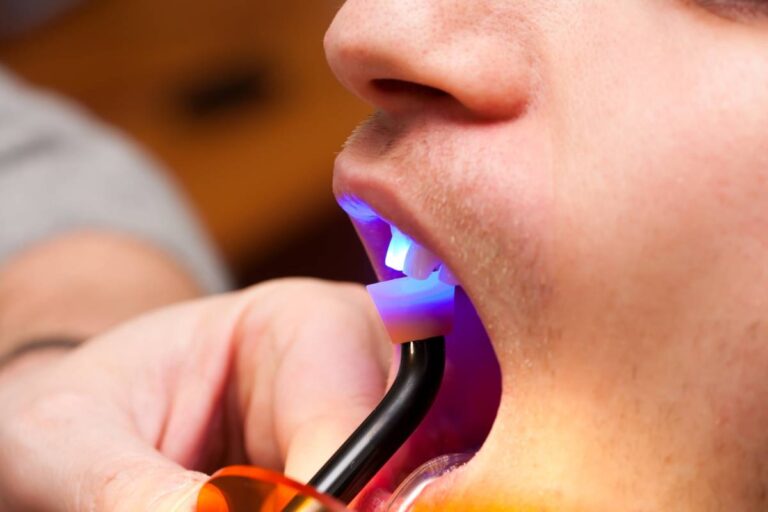Nothing’s perfect… despite what your mom may have told you 🙂
Dental bonding is no exception. It is a highly popular and proven cosmetic dentistry option but it has it’s pluses and minuses.
What Is Dental Bonding?
Dental bonding is a way to fix teeth that are chipped, discolored, decayed or otherwise ain’t looking so hot. It’s also a way to close gaps between teeth or to change the shape or color of your teeth. And sometimes it’s used to protect part of a tooth root that’s been exposed due to receding gums.
The tooth bonding (or dental bonding) procedure involves applying a tooth colored composite resin to your teeth (though if you want to go for a more festive look, check with your dentist about other color options).
If you’re looking into a dental bonding procedure, you probably want to know the pros and cons. And, if you do, you’re in the right spot!
Continue on to learn about 6 Pros and 5 Cons for dental bonding…
6 Dental Bonding Pros
1. Get a nearly spot on match for tooth color
The resin used for dental bonding can pretty much match your existing tooth color. Someone would have to look REALLY closely to tell the bonding is not part of your real tooth. The more experienced the cosmetic dentist you go to, in general, the better the end result will look.
2. Much cheaper than restorations
Restorations like veneers and crowns can cost around $1000 or more. Not so with bonding. Figure between $100 – $400 per tooth for bonding. The savings are sure to make you want to show off that new smile!
3. It’s fast
Dental bonding takes just one visit to the dentist. And only 30 – 60 minutes if the bonding procedure is done on one tooth.
4. No anesthesia
Tooth bonding is not a painful procedure. The only time you might need anesthesia is if you have a broken tooth or exposed root in the area.
5. It’s not surgery
There’s no cutting, slicing, filing, sawing, etc. involved in dental bonding. So if you’re afraid of sharp devices in or near your mouth, you don’t have to worry.
6. You keep all parts of your tooth
For crowns or veneers, the dentist will usually have to file some of the enamel off your tooth. This is so the veneer or crown fits right. For dental bonding, there is no filing and enamel loss… your original tooth remains totally intact.
5 Cons Of Dental Bonding
1. Staining
The resin used for dental bonding stains more easily than your normal teeth. So especially if you smoke or are a coffee drinker, keep that in mind before signing up for a teeth bonding procedure.
2. Prone to cracking and chipping
The bonding resin is not as strong as your regular teeth. So if you’re a teeth grinder, chew your fingernails or play hockey… take that into account.
3. Can come off
It’s not common, but the resin can come off and need to be replaced.
4. Limited lifespan
They say a diamond is forever. Dental bonding, however, is not. A lot of factors go into how long the bond will last so there is no definite answer here. Though you can figure on it lasting somewhere in the 3 – 10 year range.
5. It’s mean for smaller repairs
Dental bonding is not meant to repair particularly extensive or serious tooth issues. But it is a great and affordable option for small cracks or chips, severely discolored teeth and other minor problems with your teeth.
To find a cosmetic dentist near you that specializes in tooth bonding, visit the listings here.






